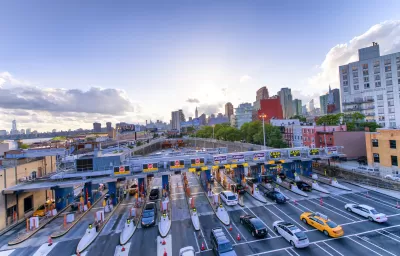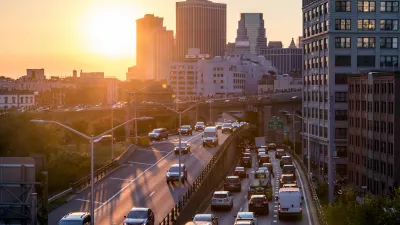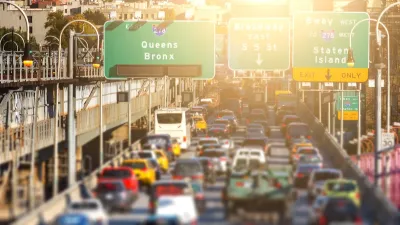The city’s new congestion pricing program, scheduled to take effect next year, could mean billions in new transit funding.

What will New York City’s congestion pricing program—now in its final planning stages—mean for public transit? As Stephen Nessen explains in Gothamist, the program is required by a 2019 state law to “bring in at least $1 billion a year for the MTA.”
Nessen adds, “The agency must use that money to finance $15 billion in bonds to pay for mass transit improvements included in its 2020-2024 capital plan — which was formed in the aftermath of New York City’s 2017 “summer of hell” when the subways and commuter railroads fell into disrepair.” The money will fund the expansion of the Second Avenue subway, the Penn Access project, and accessibility improvements at subway and Long Island Rail stations, as well as more electric buses. The article points out that congestion pricing revenue cannot legally be used for balancing the agency’s operating deficit, as some critics have claimed.
The next step is coming up with a price structure and exempt groups. Already, “Drivers won’t pay if they remain on the West Side Highway or FDR Drive south of 60th Street. Low-income drivers who live in the congestion zone, emergency vehicles and cars transporting people with disabilities are also exempt.” New Jersey officials say Garden State residents who commute to New York should receive discounted rates, although a 2021 analysis revealed that, of the 1.6 percent of New Jersey commuters who would likely pay the toll, most are more affluent than the average resident.
FULL STORY: MTA’s congestion pricing plan means big upgrades for NYC transit

Trump Administration Could Effectively End Housing Voucher Program
Federal officials are eyeing major cuts to the Section 8 program that helps millions of low-income households pay rent.

Planetizen Federal Action Tracker
A weekly monitor of how Trump’s orders and actions are impacting planners and planning in America.

Ken Jennings Launches Transit Web Series
The Jeopardy champ wants you to ride public transit.

Congress Moves to End Reconnecting Communities and Related Grants
The House Transportation and Infrastructure Committee moved to rescind funding for the Neighborhood Equity and Access program, which funds highway removals, freeway caps, transit projects, pedestrian infrastructure, and more.

From Throughway to Public Space: Taking Back the American Street
How the Covid-19 pandemic taught us new ways to reclaim city streets from cars.

Opinion: Transit Agencies Must View Service Cuts as Last Resort
Reducing service could cripple transit systems by pushing more riders to consider car ownership, making future recovery even less certain.
Urban Design for Planners 1: Software Tools
This six-course series explores essential urban design concepts using open source software and equips planners with the tools they need to participate fully in the urban design process.
Planning for Universal Design
Learn the tools for implementing Universal Design in planning regulations.
Heyer Gruel & Associates PA
Ada County Highway District
Institute for Housing and Urban Development Studies (IHS)
City of Grandview
Harvard GSD Executive Education
Toledo-Lucas County Plan Commissions
Salt Lake City
NYU Wagner Graduate School of Public Service





























